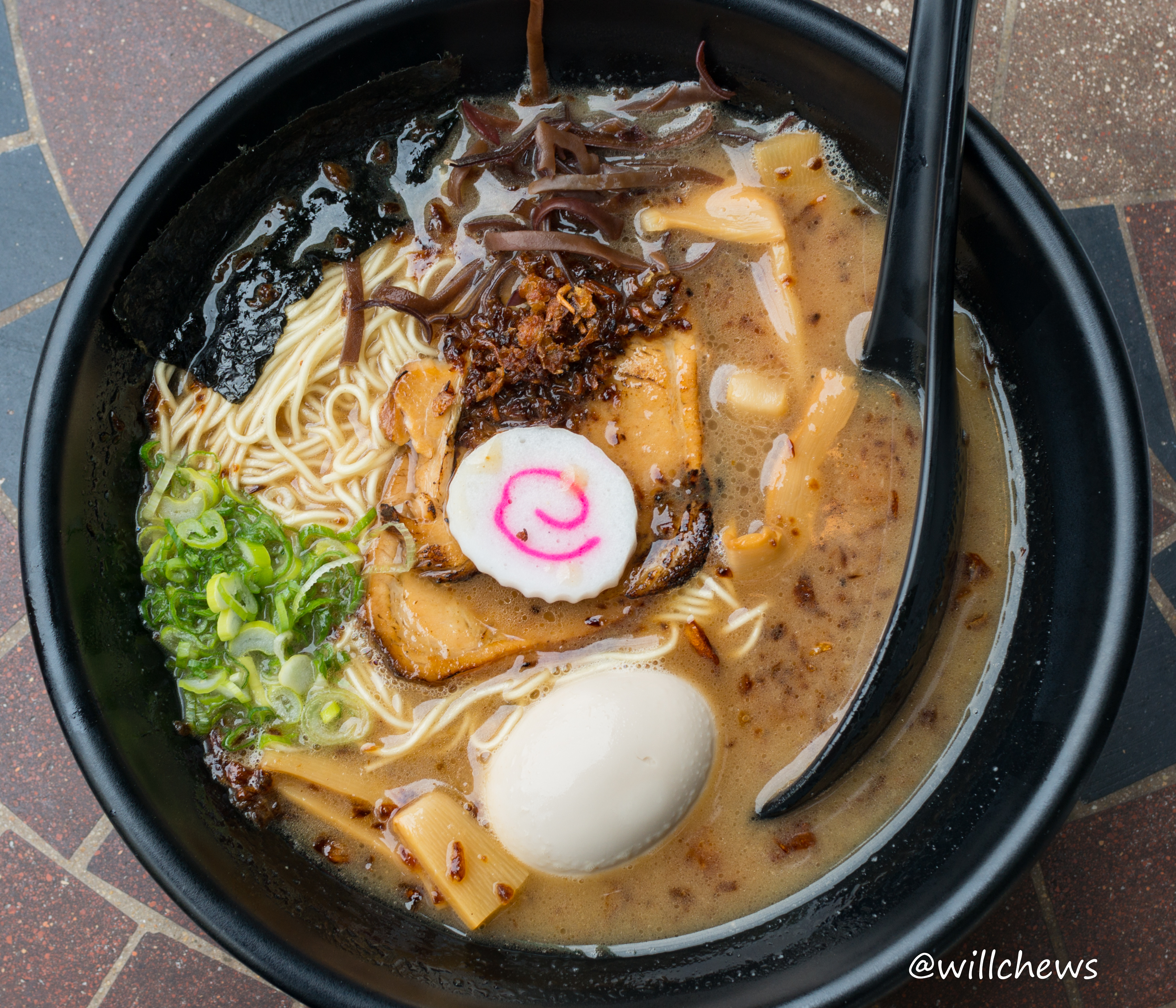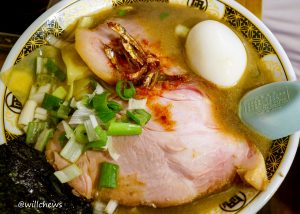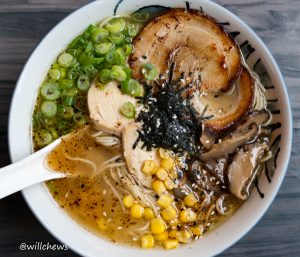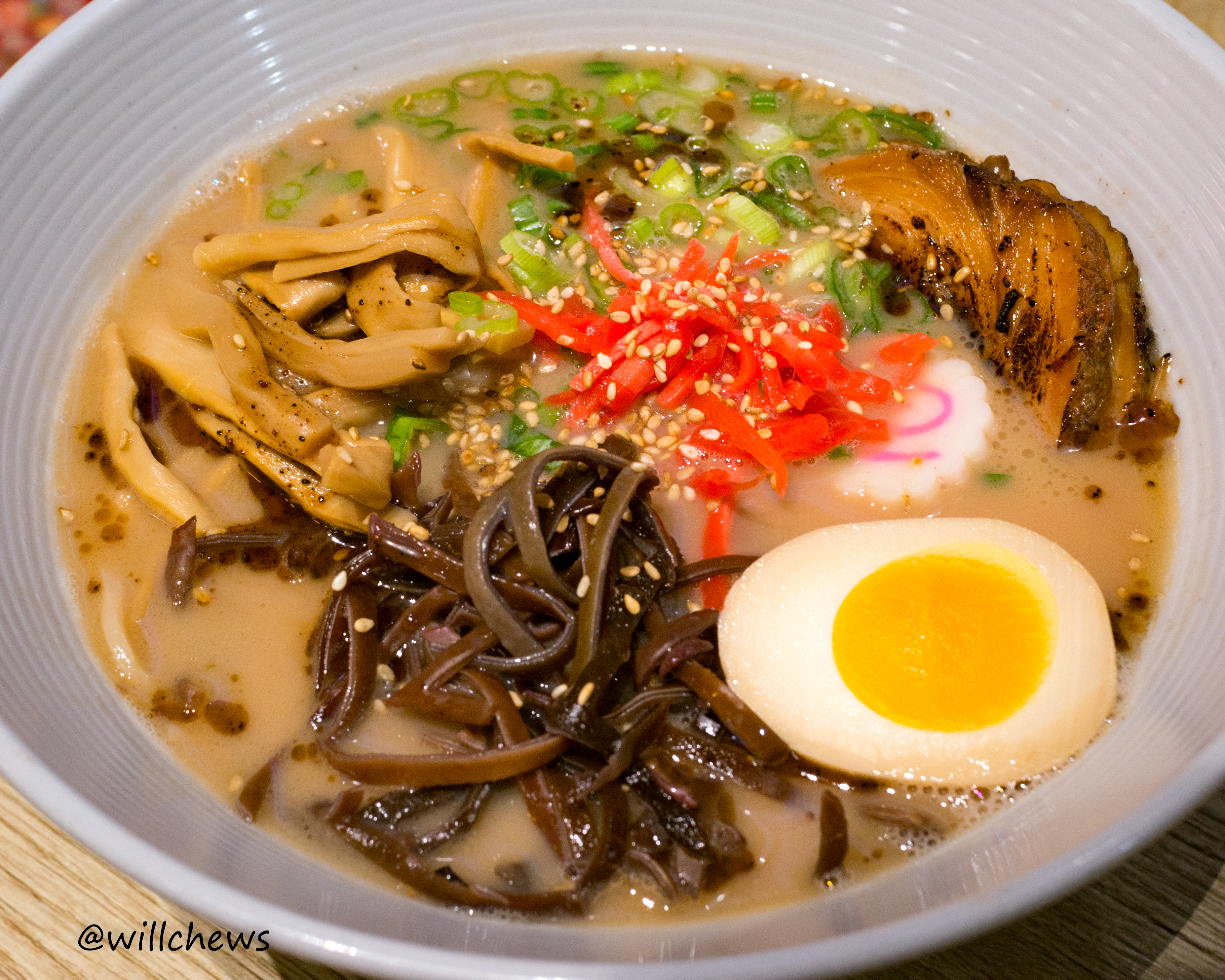I drove up to northern New Jersey this weekend to do some shopping at Mitsuwa Japanese supermarket, grab a Taylor Ham sandwich from True Salvage, ride the Cape May ferry, and get ramen from Miyagi Ramen Bar in Rehoboth, DE. I was not planning on ramen for lunch; I had a take-out tempura bowl from Hannosuke in Mitsuwa that I was very much looking forward to. But I passed by Blackbeard Ramen in Cliffside Park, noted its high rating on Yelp, and decided to stop by for a look.
The menu gave me some optimism: in addition to the typical American ramen shop staples of tonkotsu and miso, Blackbeard also offers tonkotsu-gyokai, a flavor combination that is especially popular in Tokyo, but still rare in the States. The seafood gyokai element on the menu was what initially attracted my eye to Menya Hosaki last year, and I was hoping that lightning would strike again and grant me another ramen shop I would love.
Unfortunately, that would not be the case, at least for its tonkotsu-gyokai ramen. The menu describes the gyokai as made from “fish dashi,” which in this case I assume is made from katsuobushi flakes. That’s a start, but that’s different from the typical tonkotsu-gyokai one gets in Japan, where the seafood flavors are drawn from stockpots of sturdier seafood ingredients–such as niboshi, fish bones, shellfish, etc.–to produce a stronger and more pronounced stock to pair with the tonkotstsu, resulting in a rich kotteri broth that showcases both flavors. Both pork and seafood flavors were present in Blackbeard’s tonkotsu-gyokai rendition, with the sour notes from the katsuobushi dashi clearly coming through. But the broth was thin and I thought that the seafood flavors were lost as I spooned the bottom of the bowl. Tonkotsu-gyokai bowls differ from shop to shop, but the good ones all have unmistakable presence, that you are eating tonkotsu-gyokai; Blackbeard’s did not. Using a more concentrated pork stock and more robust seafood ingredients may help.
Other elements of the bowl also felt short of expectations. More and more ramen shops are preparing their chashu as slices of coiled pork belly that are grilled/blowtorched before serving, which is also the case at Blackbeard. Unfortunately, the chashu was dry and thinly cut, which made it brittle in the clutches of my chopsticks and lacking the meatiness that good chashu should have. The noodles were obviously sourced from an outside vendor, probably Sun Noodles, which has its factory nearby. That was fine, but what was problematic was Blackbeard’s choice to use the thin, hard noodles intended for Hakata-style tonkotsu, rather than the thicker-cut noodles that usually accompany tonkotsu-gyokai. Blackbeard uses other kinds of noodles, such as in my friend’s miso ramen, so I would’ve liked them to use a thicker, higher water-content noodle that would scoop up broth better. Finally, upon opening the ajitama egg, I found its yolk/white border to be caked with yellow, flaky yolk, which suggests that the eggs were probably boiled a minute too long. Not a huge deal, but Blackbeard should do better here.
Overall, Blackbeard Ramen should be praised for its effort to go beyond the tonkotsu-spicy miso Axis of Evil that plagues so many American ramen restaurants. However imperfectly executed, its venture into tonkotsu-gyokai is a positive sign. But most of the components of that bowl need improvement, and the most important change (and likely the hardest) is the quality and presence of its broth.
Q(ueue) Factor: None (Sunday 1230). Plenty of outdoor seating.
Ambiance: Brick lined atmosphere and accurate use of Japanese kanji/kana.
Price: Tonkotsu-Gyokai Ramen ($12) + Ajitama ($1.50) + Menma ($1) + Tax/Tip



